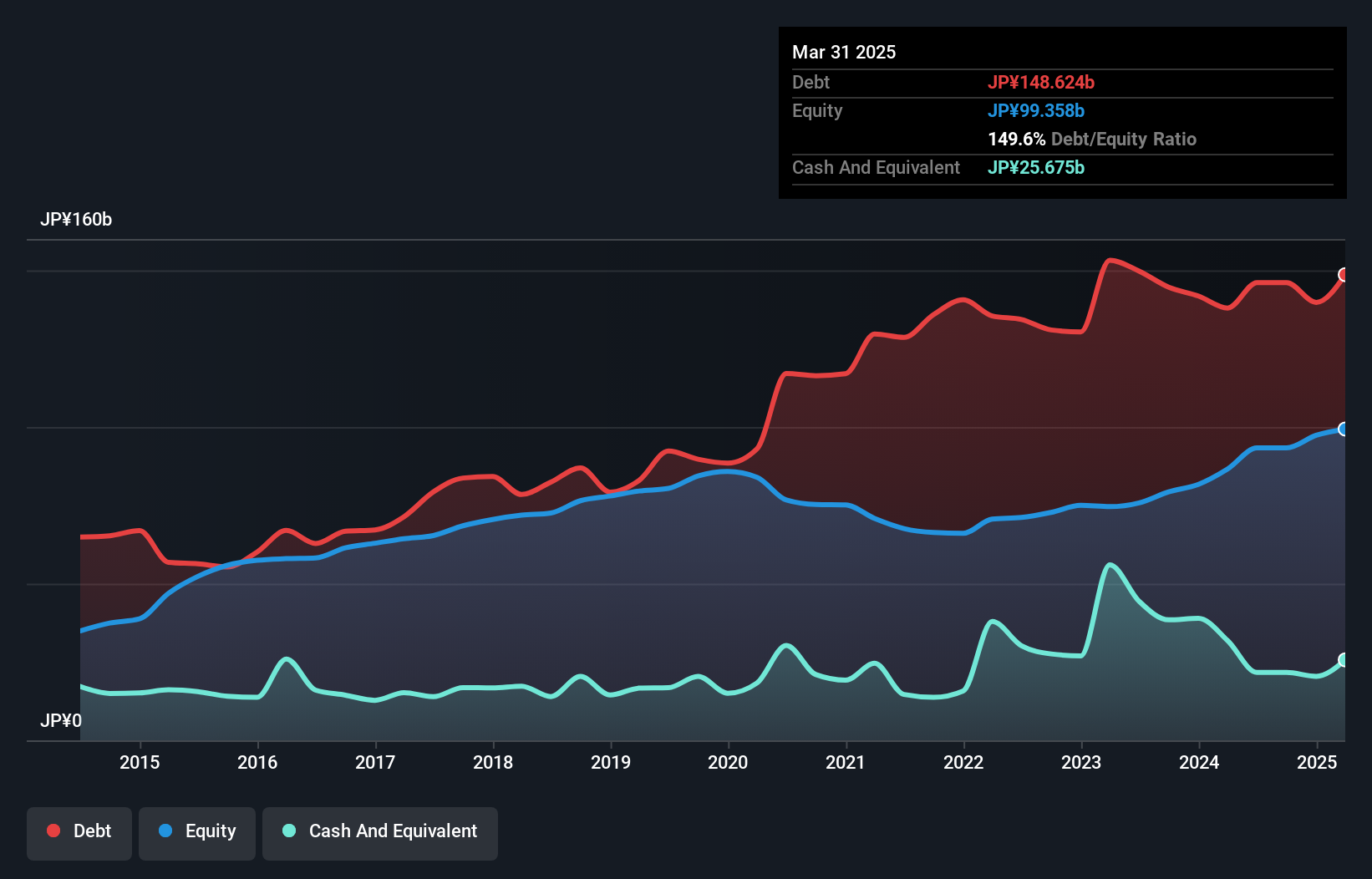- Japan
- /
- Hospitality
- /
- TSE:9616
We Think Kyoritsu Maintenance (TSE:9616) Is Taking Some Risk With Its Debt
The external fund manager backed by Berkshire Hathaway's Charlie Munger, Li Lu, makes no bones about it when he says 'The biggest investment risk is not the volatility of prices, but whether you will suffer a permanent loss of capital.' So it might be obvious that you need to consider debt, when you think about how risky any given stock is, because too much debt can sink a company. We can see that Kyoritsu Maintenance Co., Ltd. (TSE:9616) does use debt in its business. But is this debt a concern to shareholders?
When Is Debt A Problem?
Debt is a tool to help businesses grow, but if a business is incapable of paying off its lenders, then it exists at their mercy. Part and parcel of capitalism is the process of 'creative destruction' where failed businesses are mercilessly liquidated by their bankers. However, a more common (but still painful) scenario is that it has to raise new equity capital at a low price, thus permanently diluting shareholders. Of course, plenty of companies use debt to fund growth, without any negative consequences. When we think about a company's use of debt, we first look at cash and debt together.
What Is Kyoritsu Maintenance's Net Debt?
As you can see below, at the end of March 2025, Kyoritsu Maintenance had JP¥148.6b of debt, up from JP¥137.9b a year ago. Click the image for more detail. However, because it has a cash reserve of JP¥25.7b, its net debt is less, at about JP¥122.9b.

How Healthy Is Kyoritsu Maintenance's Balance Sheet?
According to the last reported balance sheet, Kyoritsu Maintenance had liabilities of JP¥108.1b due within 12 months, and liabilities of JP¥94.0b due beyond 12 months. On the other hand, it had cash of JP¥25.7b and JP¥18.2b worth of receivables due within a year. So its liabilities total JP¥158.2b more than the combination of its cash and short-term receivables.
This deficit is considerable relative to its market capitalization of JP¥260.1b, so it does suggest shareholders should keep an eye on Kyoritsu Maintenance's use of debt. This suggests shareholders would be heavily diluted if the company needed to shore up its balance sheet in a hurry.
See our latest analysis for Kyoritsu Maintenance
We use two main ratios to inform us about debt levels relative to earnings. The first is net debt divided by earnings before interest, tax, depreciation, and amortization (EBITDA), while the second is how many times its earnings before interest and tax (EBIT) covers its interest expense (or its interest cover, for short). This way, we consider both the absolute quantum of the debt, as well as the interest rates paid on it.
Kyoritsu Maintenance's net debt is 4.4 times its EBITDA, which is a significant but still reasonable amount of leverage. But its EBIT was about 53.1 times its interest expense, implying the company isn't really paying a high cost to maintain that level of debt. Even were the low cost to prove unsustainable, that is a good sign. We note that Kyoritsu Maintenance grew its EBIT by 23% in the last year, and that should make it easier to pay down debt, going forward. There's no doubt that we learn most about debt from the balance sheet. But ultimately the future profitability of the business will decide if Kyoritsu Maintenance can strengthen its balance sheet over time. So if you want to see what the professionals think, you might find this free report on analyst profit forecasts to be interesting.
Finally, a business needs free cash flow to pay off debt; accounting profits just don't cut it. So it's worth checking how much of that EBIT is backed by free cash flow. During the last three years, Kyoritsu Maintenance burned a lot of cash. While that may be a result of expenditure for growth, it does make the debt far more risky.

Our View
While Kyoritsu Maintenance's conversion of EBIT to free cash flow has us nervous. To wit both its interest cover and EBIT growth rate were encouraging signs. When we consider all the factors discussed, it seems to us that Kyoritsu Maintenance is taking some risks with its use of debt. While that debt can boost returns, we think the company has enough leverage now. When analysing debt levels, the balance sheet is the obvious place to start. But ultimately, every company can contain risks that exist outside of the balance sheet. These risks can be hard to spot. Every company has them, and we've spotted 1 warning sign for Kyoritsu Maintenance you should know about.
Of course, if you're the type of investor who prefers buying stocks without the burden of debt, then don't hesitate to discover our exclusive list of net cash growth stocks, today.
Valuation is complex, but we're here to simplify it.
Discover if Kyoritsu Maintenance might be undervalued or overvalued with our detailed analysis, featuring fair value estimates, potential risks, dividends, insider trades, and its financial condition.
Access Free AnalysisHave feedback on this article? Concerned about the content? Get in touch with us directly. Alternatively, email editorial-team (at) simplywallst.com.
This article by Simply Wall St is general in nature. We provide commentary based on historical data and analyst forecasts only using an unbiased methodology and our articles are not intended to be financial advice. It does not constitute a recommendation to buy or sell any stock, and does not take account of your objectives, or your financial situation. We aim to bring you long-term focused analysis driven by fundamental data. Note that our analysis may not factor in the latest price-sensitive company announcements or qualitative material. Simply Wall St has no position in any stocks mentioned.
About TSE:9616
Good value with proven track record.
Market Insights
Community Narratives



